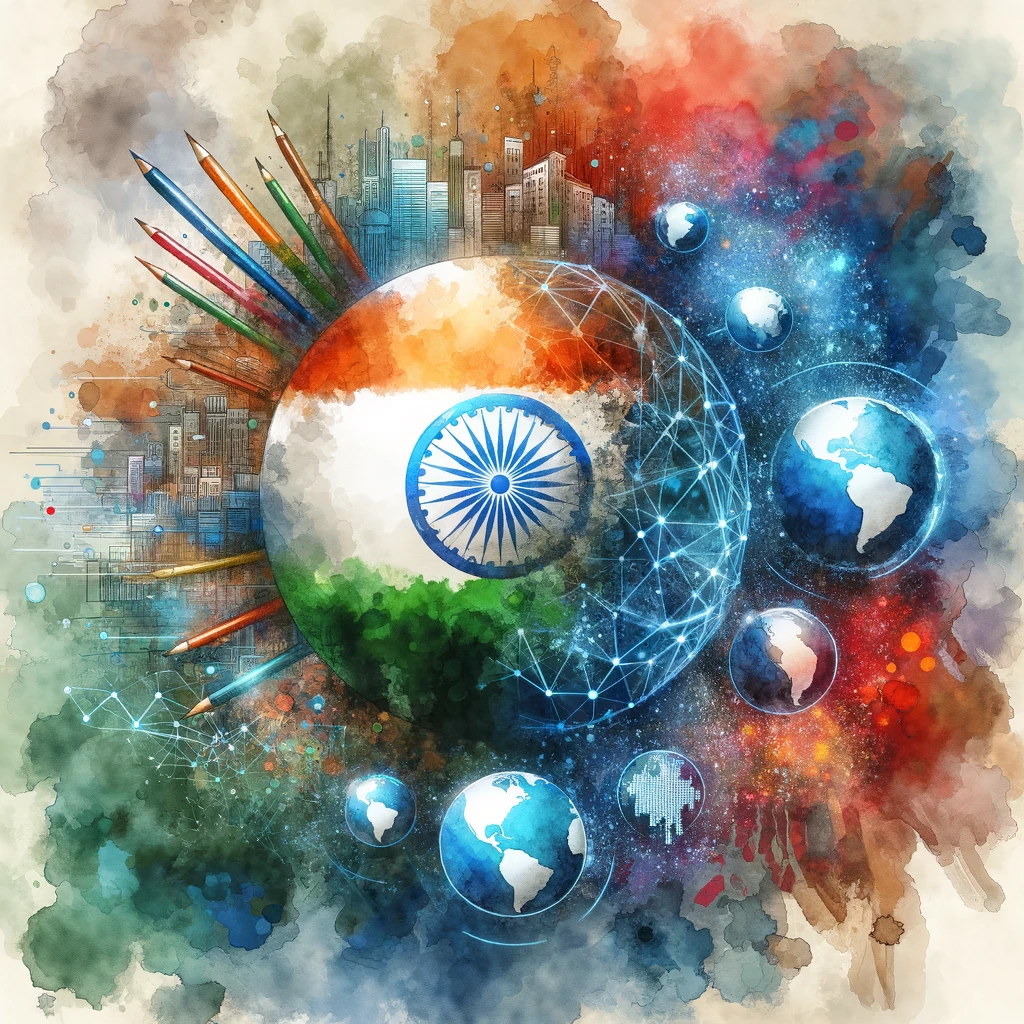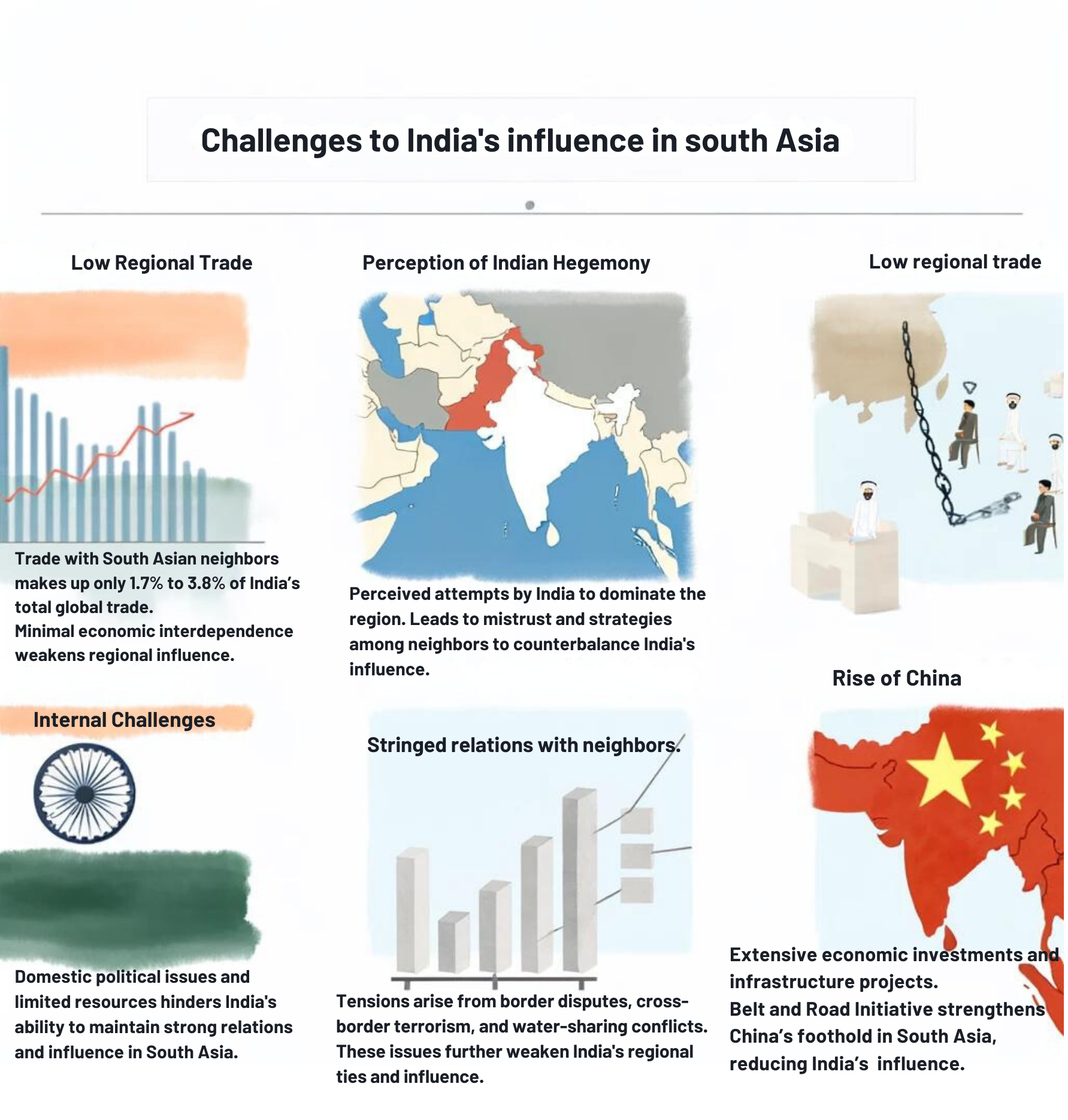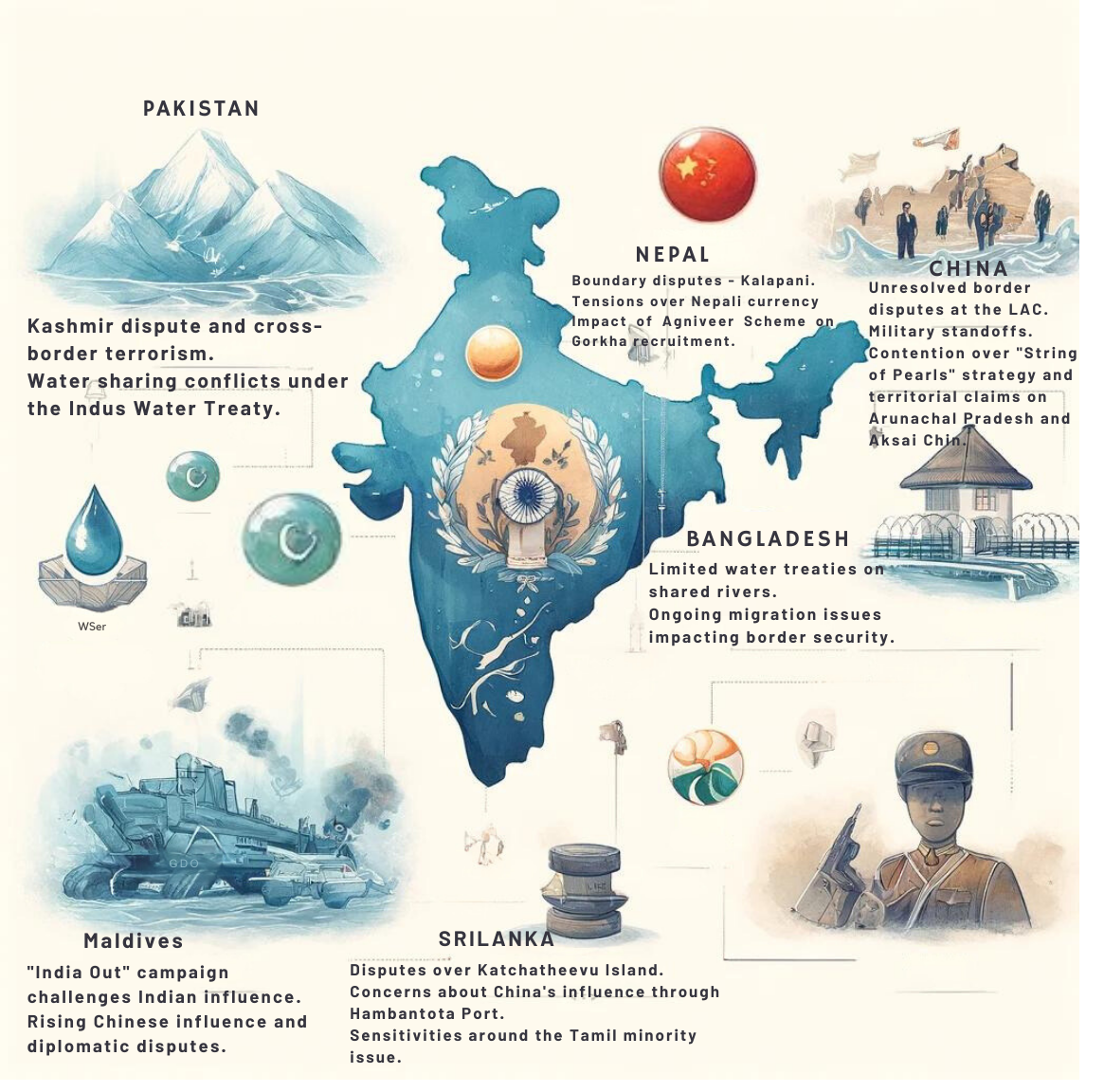
India has been spotlighted for its significant strides on the global stage, showcasing impressive economic growth and strategic partnerships, and playing a prominent role in international forums. However, this ascent on the world stage is accompanied by a paradox. While India’s global influence grows, its influence in its immediate neighborhood—South Asia—appears to be waning. This editorial delves into this intriguing dichotomy, exploring the complexities of India’s international and regional relations.
Origin of the Article
This analysis is inspired by “The paradox of India’s global rise, its regional decline” from The Hindu, published on May 4, 2024. The piece discusses India’s increasing global presence alongside a noticeable decline in its regional power in South Asia.
India’s Ascending Global Influence
What Makes India Globally Influential?
Economic Growth: India’s economy is expected to grow by 7.5% in the next year, thanks to strong performances in services and industries. This economic strength helps India become more influential globally. For example, Indian companies like Tata Consultancy Services have a significant presence worldwide, and a strong economy also attracts more investments.
Strategic Partnerships: India has formed important partnerships with major countries, including the USA, Japan, and Australia, through the Quadrilateral Security Dialogue (Quad). These alliances help India counter China’s influence in the Indo-Pacific region and boost its global position. India also participates in groups like BRICS and the Shanghai Cooperation Organization, which further its global standing.
Military Strength: India is enhancing its military by building more advanced ships and aircraft, like INS Sahyadri and LCA Tejas. It’s also starting to sell military equipment, like BrahMos missiles, to other countries, which boosts its defense diplomacy.
Independent Foreign Policy: India follows its path in international affairs, which is respected globally. For example, it stays neutral in conflicts like those involving Russia and balances its relations with countries like Israel and Palestine. India also continues to buy oil from Russia, putting its interests first.
Technological Advancements: India’s progress in technology, space, and renewable energy has significantly contributed to its rise. Achievements in space missions like Chandrayaan-3 and leadership in initiatives like the International Solar Alliance highlight India’s capabilities.
Cultural Impact: India’s rich culture, democracy, and people living abroad have enhanced its image worldwide. Indian movies, food, yoga, and spirituality are popular globally, adding to India’s charm and influence.
Challenges in South Asia
Factors Leading to the Regional Decline of India in South Asia?

- Rise of China: China has made significant economic investments and infrastructure projects in South Asia through the Belt and Road Initiative. These actions have reduced India’s traditional influence in the region, causing a decline in its power.
- Low Regional Trade: Trade between India and other South Asian countries is very low, making up only about 1.7% to 3.8% of India’s total global trade. This low level of regional trade contributes to India’s decreasing influence in its neighborhood.
- Perception of Indian Hegemony: Some smaller countries in South Asia view India’s actions as an attempt to dominate the region. This perception has led to mistrust and efforts to counterbalance India’s influence through various strategies like balancing, bargaining, hedging, and bandwagoning.
- Strained Relations with Neighbors: India’s relationships with some neighboring countries are tense due to issues like border disputes, cross-border terrorism, and conflicts over water sharing. These strained relations further weaken India’s regional influence.
- Internal Challenges: India faces its own internal problems, such as political issues and limited resources. These challenges distract from India’s ability to engage actively with its neighbors, further reducing its influence in South Asia.
Main Challenges with Neighbouring Countries?

- Pakistan: The primary issues between India and Pakistan include the Kashmir dispute and cross-border terrorism. Additionally, the Indus Water Treaty of 1960, which allocates water rights from the Indus River system, has led to disagreements over water sharing and infrastructure projects.
- China: Although not a South Asian nation, China’s influence affects the region significantly. Key issues include unresolved border disputes over the Line of Actual Control (LAC), which have led to military standoffs like the recent Galwan Valley incident. China’s “String of Pearls” strategy and the China-Pakistan Economic Corridor challenge India’s strategic interests. Recent tensions have also risen from China’s “standard map,” claiming Arunachal Pradesh and Aksai Chin as its own.
- Maldives: Political movements such as the “India Out” campaign label Indian involvement as a sovereignty threat. Issues related to tourism and China’s increasing influence in the Maldives have also strained relations.
- Bangladesh: India and Bangladesh share 54 rivers but have treaties on only two, leading to ongoing negotiations over others like the Teesta and Feni rivers. Illegal migration from Bangladesh to India presents significant security and social challenges.
- Sri Lanka: Relations are complicated by issues such as the ownership of Katchatheevu Island, border security, smuggling, the Tamil minority issue, and concerns over China’s influence, particularly through the Hambantota Port.
- Nepal: While relations have seen recent improvements, disputes over boundaries, particularly around the Kalapani-Limpiyadhura-Lipulekh trijunction and the Susta area, persist. The recent printing of a Nepali currency note featuring disputed territories with India has raised tensions. Additionally, the new Agniveer Scheme in India has influenced the Gorkhas’ alignment towards China.
These challenges highlight the complex dynamics and ongoing tensions India faces with its neighboring countries, impacting its regional relations and strategic posture.
Read about Association of Southeast Asian Nations (ASEAN) here.
Enhancing Regional Relationships
Development-Focused Diplomacy
India should engage in development-centric diplomacy, emphasizing collaborative projects that meet regional needs and fostering stability and mutual interests.
Cooperative Security
Joint initiatives in counter-terrorism and regional disaster response can build trust and enhance security among South Asian nations.
Strengthening Regional Blocs
Engaging more actively with groups like BIMSTEC and SAARC can improve India’s effectiveness and influence in regional politics.
Revitalizing Neighborhood First Policy
Reinforcing this policy through inclusive development and transparent communication can rejuvenate India’s regional relationships.
Positioning South Asia in Global Discussions
Elevating South Asia’s role in international dialogues can enhance regional cohesion and strengthen India’s leadership.
Conclusion
India’s rise on the global stage, juxtaposed with its regional challenges, presents both opportunities and obstacles. Understanding these dynamics is key to comprehending India’s foreign policy and strategic priorities. Focused diplomatic efforts and a commitment to regional cooperation are essential for India to balance its global aspirations with regional leadership.

